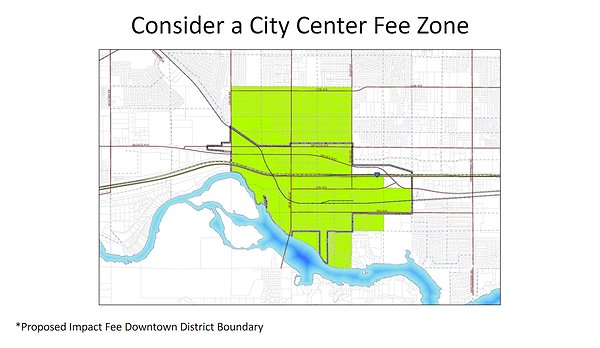Post Falls considers future of impact fees
CAROLYN BOSTICK | Hagadone News Network | UPDATED 7 months AGO
Carolyn Bostick has worked for the Coeur d’Alene Press since June 2023. She covers Shoshone County and Coeur d'Alene. Carolyn previously worked in Utica, New York at the Observer-Dispatch for almost seven years before briefly working at The Inquirer and Mirror in Nantucket, Massachusetts. Since she moved to the Pacific Northwest from upstate New York in 2021, she's performed with the Spokane Shakespeare Society for three summers. | October 16, 2024 1:07 AM
POST FALLS — Post Falls officials are considering how impact fees currently operate within the city and whether to potentially implement a city center fee zone in the future.
During the City Council meeting Tuesday night, councilors learned that approximately 7,800 non-residents work in Post Falls. One of the questions in the analysis is who is using “multimodal” facilities such as trails, bike lanes, etc.
Community development director Bob Seale said he was originally very hopeful that the city might be able to see reduced fees in the downtown area.
There’s still potential for that outcome, but as the city and Welsh Comer move through Phase One of the study, that has become a less likely recommendation that the study could make.
“My hopes are kind of subsiding a little bit as we go through this,” Seale said.
City officials are confident in the current impact fee analysis, but Seale noted that a different methodology may prove to be a more favorable perspective for the city in the long run.
Melissa Cleveland from Welsh Comer said the study uses comparison with data from other cities to see how “they slice up the pie.”
The study is considering how best to encourage infill in underutilized areas with lower rates when possible, to encourage development.
Mayor Ron Jacobson noted that there isn’t really a golden standard for impact fees, but he supports a city fee zone and expressed interest in the final results from the study and how they compare with current numbers.
“If you’re looking to redevelop and regentrify some of the areas downtown, I would wholeheartedly support a zone like that where it would be reduced,” Jacobson said.
Westlund seconded excitement for the possibility of fee zones, especially if they scale up in cost for services as you leave the city center.
With the addition of ordinances for tiny homes and cottage homes on the city books, Westlund wants to concentrate on making sure impact fees don’t disincentive starter homes in the city limits.
In November, the study will concentrate on police, parks and transportation.
The study is also considering how Post Falls escalates fees annually.
ARTICLES BY CAROLYN BOSTICK

Hayden hosts Arbor Day festival
The City of Hayden holds its festival for Arbor Day a few weeks after the nationally recognized holiday and for 23 years, the celebration gets bigger among local schools. Mayor Alan Davis declared in a proclamation Thursday that “May 15 is Arbor Day in the City of Hayden.”

Celebrating 40 years of friendships at Coeur d'Alene's Specialized Needs Recreation
Tanja Batchelder met new people, shaking hands and exchanging smiles before she got back to her work on the loom. Batchelder said it takes weeks to complete a table runner on the loom, but the work kept her hands busy as she smiled at the hubbub of the celebration and open house taking place around her at Specialized Needs Recreation. "I love SNR and meeting new friends and spending time with them," Batchelder said. "There are baby chicks here, too."

Students get agricultural education at Farm to Table event
A bushel of wheat has about one million wheat kernels and weighs 60 pounds. One bushel of wheat will yield about 42 pounds of white flour which can then be used to make 62-70 loaves of bread or 42 pounds of pasta. After getting some background on wheat in the grain building at Farm to Table Wednesday, student Ethan Barney had one goal: grind as much of the kernels as he could before the time was up.



